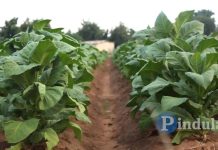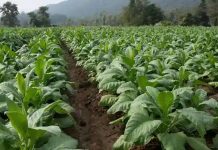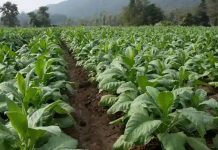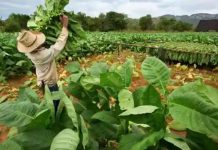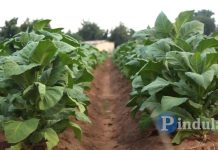Zimbabwe remains the largest producer of tobacco in Africa and the sixth largest globally with tobacco now the critical cash crop for a wide swathe of farmers in ecological regions two and three.
Land reform saw the huge change from the crop being grown by a couple of thousand major growers to tobacco grown by tens of thousands of farmers, ranging from communal growers with half a hectare up to commercial growers, what is called the A2 sector, with large fields.
So tobacco is not just the main foreign exchange earner, still despite the growing mining investment and the growth of anti-smoking lobbies globally, but also a major factor in moving a large block of rural families from poverty to something approaching middle-class status.
Tobacco is our lifeline and accounts for about 10 percent of our GDP. But that 10 percent is now divided among a lot more people, so we have both the wealth and a far fairer distribution of that wealth.
Over the past few years, on average, tobacco has earned the country over US$1 billion annually, with a good chunk of that value shared by the farmers and the rest being earned by the tobacco merchants who process the leaf, pack the right mixes for major customers, insure the shipments and then get the right quality and right mix to the right customer.
Zimbabwe produces about 25 percent of the African and 2,8 percent of the global tobacco crop. So it’s not a crop and sector we can afford to ignore.
This week, we reported that tobacco growers have already planted 21 348 hectares of tobacco in the current cropping season with a massive 123 159 farmers registered to grow the crop.
The bulk of the crop is now grown on contract, that is the merchants having lists of farmers they know have the skills, land and honesty to deliver the crop and pay back their loans they got in the form of inputs.
But this system of financing each year’s crop through merchant contracts has one essential weakness, that the financing is for inputs, and not for capital investments, with the small-scale sectors still largely shut out of the banking system when it comes to such investment.
But climate change is hitting the smallholder farmers hardest and this majority of producers still rely on rain-fed agriculture and this tends to expose them to the vagaries of nature.
To ensure better crop yields and output, tobacco growers need access to irrigation and equipment. They need small dams, they need boreholes, they need pumps and they need piping.


